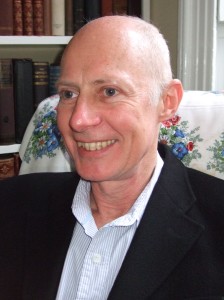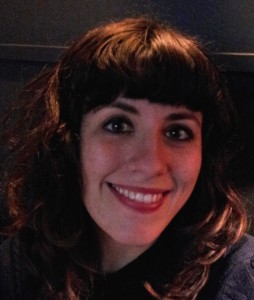A surgical generation has passed since the introduction of keyhole surgery in the late 1980s. In that time the landscape of surgery has changed beyond recognition. In less than three decades, minimally invasive (keyhole) surgery has moved from being a controversial and contested experimental approach (generating all the debate and opposition which innovations usually entail) to becoming an established frame across the developed world—a “way of doing” that many surgeons now take for granted. We found ourselves asking how practices that are unquestioned today evolved from what only a few years ago seemed revolutionary.
Documenting surgical history
In 2012 we began a project that initially aimed to chart a pivotal moment in the surgical history of the 20th century, something which, as both Lawrence and Schlich have noted, [1, 2] remains curiously under-researched.
Surgery is often assumed to be an unproblematic and self-evident practice in comparison to other branches of medicine, such as psychiatry, where the influence of cultural trends may be more obvious initially.[1, 2] However, documenting change within surgery offers particular challenges. Accounts in journals and textbooks privilege what can be put into words, therefore omitting a rich network of unspoken knowledge based on doing. Because this embodied knowledge cannot be adequately captured by words, it is not shared through the usual academic channels and tends to be under-recognised and undervalued. We therefore set out to build a picture of the undocumented processes that shaped the introduction of minimally invasive therapy in the 1980s and 1990s. In addition to individual and group interviews with key figures from the time (including surgical teams, industry collaborators, and those from the media), we used simulation based re-enactment of surgical procedures as a means of prompting collective recollection, as has been previously detailed in The BMJ and elsewhere. [3, 4] The videos of these demonstrations are available to view at http://smartdocs.tv/ellis and http://smartdocs.tv/percs/.
The re-enactment process also reunited a number of medical “teams,” who played pivotal parts in the development of keyhole surgery. Of particular interest was the team led by the urologist John Wickham. The project enabled a series of individual and group interviews to be undertaken with Wickham and his team. As the significance of their role in the move towards minimally invasive techniques became increasingly apparent, “Team Wickham” began to form the basis of our historical research. Interviews with Wickham—as well as his colleagues from surgery, nursing, radiology, and instrument manufacture—have helped us to form a rich history of this crucial moment in surgical innovation.
Keyhole surgery—a radical concept
Until well into the second half of the 20th century, the idea of conducting major procedures through small incisions would have seemed heretical. Since the late 19th century large incisions had been accepted as inevitable and indeed desirable—a doorway for entering the body. As a surgical trainee in the 1980s, Kneebone’s teachers dinned into him the mantra “if in doubt, extend the incision.” The surgeon’s need for a good view far outweighed any negative consequences of invading the patient’s body, such as pain, postoperative complications, or time off work.
At around this time, some surgeons were beginning to challenge this philosophy, asking whether it might be possible to perform large operations through small holes rather than the other way round. John Wickham was a central figure in this movement. Wickham’s major contribution was to see the need for a radical change in the philosophy of surgery in which patients’ needs were prioritised over surgeons’. He framed this challenge in terms of a shared solution, taking the radical step of working on equal terms with experts in two fledgling disciplines—interventional radiology and instrument manufacture—which had previously been seen as having a supportive rather than a primary role. This triumvirate, together with a wider group of clinicians, trainees, and researchers, combined creative energy with extensive access to technological knowhow.
Wickham’s personal vision and achievements worked within broader currents of the time—a time of technological innovation and intellectual ferment. Fibre optics, clinical imaging, energy sources, and miniaturisation were all developing at breakneck speed. At the same time the social context of surgery, where the use of promising but untested approaches was widely accepted by patients in a way that would be inconceivable in today’s regulatory climate, made it possible for new ideas to be tried out at a relatively early stage. This heady mixture provided unique conditions for challenging the existing order.
A small number of pioneers (such as Wickham) took advantage of these unusual circumstances to bring about profound change, deliberately disrupting long established modes of practice. In many quarters their ideas provoked widespread resistance, amounting at times to hostility; yet in others their vision was enthusiastically taken up, bringing about radical change in a relatively short time. Yet after initial resistance was overcome, this radicalism became absorbed into mainstream practice, becoming the “new normal.” [5] In the process, the part played by the early pioneers has started to disappear from view.
Conclusion
It seems a truism to point out that history can distort the part played by individuals in bringing about radical change. The value of innovations often only becomes evident well after they have been first introduced. By then, a lot of the contextual information surrounding their development has been lost or diluted, transformed into a retrospective account built on knowledge of subsequent events. There is a danger that such accounts will present a constructed, almost fictionalised account, which understates the roles of individuals, personal interaction, chance, and luck in the development of new approaches within surgery. Indeed, pioneers often become swept away by those who come after, their stories becoming lost. Yet such understandings may be of great value in weighing the claims of present day innovation.
Many of the issues we have uncovered in researching keyhole surgery are as relevant today as they were in the 1980s. The tension between minimising the likelihood of harm to an individual patient and exploring new approaches in the hope of achieving improvement remains a vexed question for the medical profession. Lord Saatchi’s failed yet controversial Medical Innovation Bill highlights the depth of feeling that such issues engender today.
Understanding the complex realities of surgical innovation is crucial if we are to make good judgments about developments unfolding in front of us. Perhaps we should consider how today’s innovations may appear to the surgeons and historians of tomorrow, and ask how we might document questions which remain relevant today. If much that is important does not appear in written accounts, capturing and storing such information so that it is not lost to future generations becomes a pressing need.
Roger Kneebone, professor of surgical education and engagement science, Imperial College London.
Sally Frampton, postdoctoral research assistant, faculty of English, University of Oxford.
Acknowledgements
We gratefully acknowledge the contributions of John Wickham (urological surgeon); Mike Kellett (interventional radiologist); Toni Raybould (theatre nurse); Ron Miller (urological surgeon); manufacturer Stuart Greengrass (instrument manufacturer); Chris Russell (surgeon); Chris Fowler (urological surgeon); Fiona Holmes (producer of BBC television documentaries Your Life In Their Hands and Tomorrow’s World At Large); Abigail Woods (historian); Paul Craddock (film maker, SmartDocs). This work was funded by the Wellcome Trust (to RK).
We have read and understood BMJ policy on declaration of interests and have no further interests to declare.
References
1. Lawrence C. Democratic, divine and heroic: The history and historiography of surgery. Medical theory, surgical practice: studies in the history of surgery. Routledge, 1992. p. 1-47.
2. Schlich T. The origins of organ transplantation: Surgery and laboratory science, 1880-1930. University of Rochester Press, 2010.
3. Kneebone R, Woods A. Recapturing the history of surgical practice through simulation based re-enactment. Med Hist 2014;58:106-21.
4. Kneebone R, Woods A. Bringing surgical history to life. BMJ 2012;345:e813.
5. Kuhn T. The Structure of Scientific Revolutions. University of Chicago Press, 1996.

